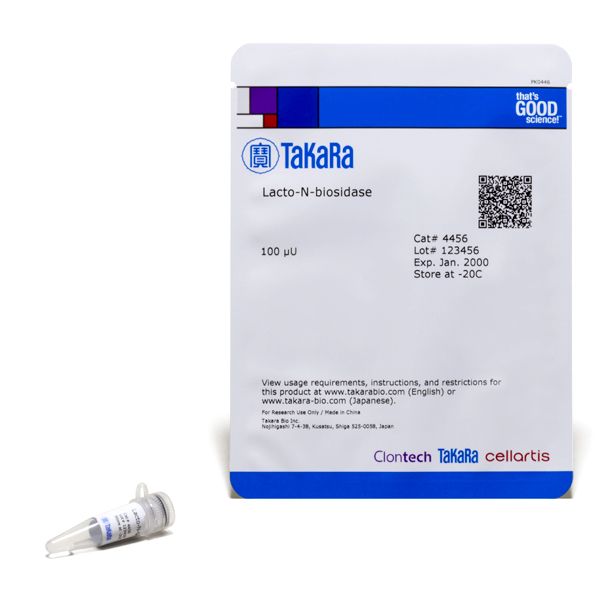Lacto-N-biosidase
Lacto-N-biosidase
This enzyme specifically hydrolyzes oligosaccharides with type I chains and produces lacto-N-biose (Galb-3GlcNAc). It does not hydrolyze oligosaccharides with type II chain. The structure of the substrate essential for the enzyme activity is the terminal lacto-N-biosyl residue (Galb1-3GlcNAc). The enzyme does not hydrolyze a 2,3-sialyllacto-N-tetraose, lacto-N-fucopentaose I and II. One vial of this product (100 μl) allows 50–100 reactions of enzyme digestion of sugar chain up to 10 pmol.
Applications
- Specific hydrolysis of oligosaccharides with type-I sugar chains and production of byproduct lacto-N-biose (Gal β 1-3 GlcNAc)
Source
Streptomyces sp. 142
Sano, M., Hayakawa, K. & Kato, I. Purification and characterization of an enzyme releasing lacto-N-biose from oligosaccharides with type 1 chain. J. Biol. Chem. 268, 18560–18566 (1993).
Sano, M., Hayakawa, K. & Kato, I. Purification and characterization of alpha-L-fucosidase from Streptomyces species. J. Biol. Chem. 267, 1522–7 (1992).
Stroud, M. R. et al. Extended type 1 chain glycosphingolipids: Dimeric Lea (III4V4Fuc2Lc6) as human tumor-associated antigen. J. Biol. Chem. 266, 8439–8446 (1991).
Takasaki, S. & Kobata, A. Asparagine-linked sugar chains of fetuin: occurrence of tetrasialyl triantennary sugar chains containing the Gal beta 1—3GlcNAc sequence. Biochemistry 25, 5709–15 (1986).
Townsend, R. R., Hardy, M. R., Wong, T. C. & Lee, Y. C. Binding of N-linked bovine fetuin glycopeptides to isolated rabbit hepatocytes: Gal/GalNAc hepatic lectin discrimination between Gal beta(1,4)GlcNAc and Gal beta(1,3)GlcNAc in a triantennary structure. Biochemistry 25, 5716–5725 (1986).


